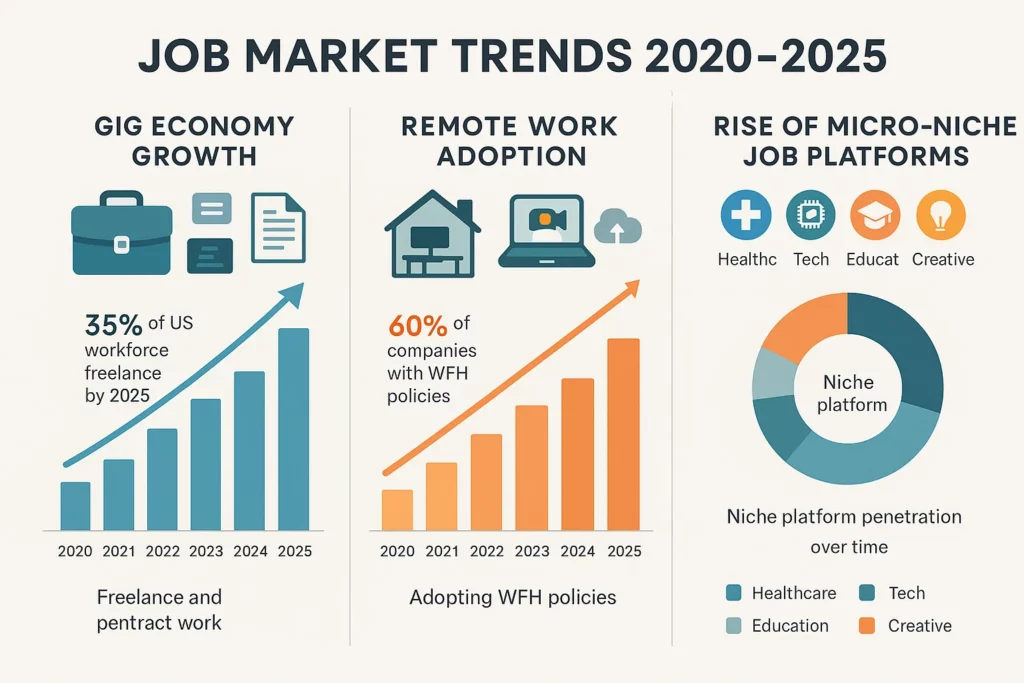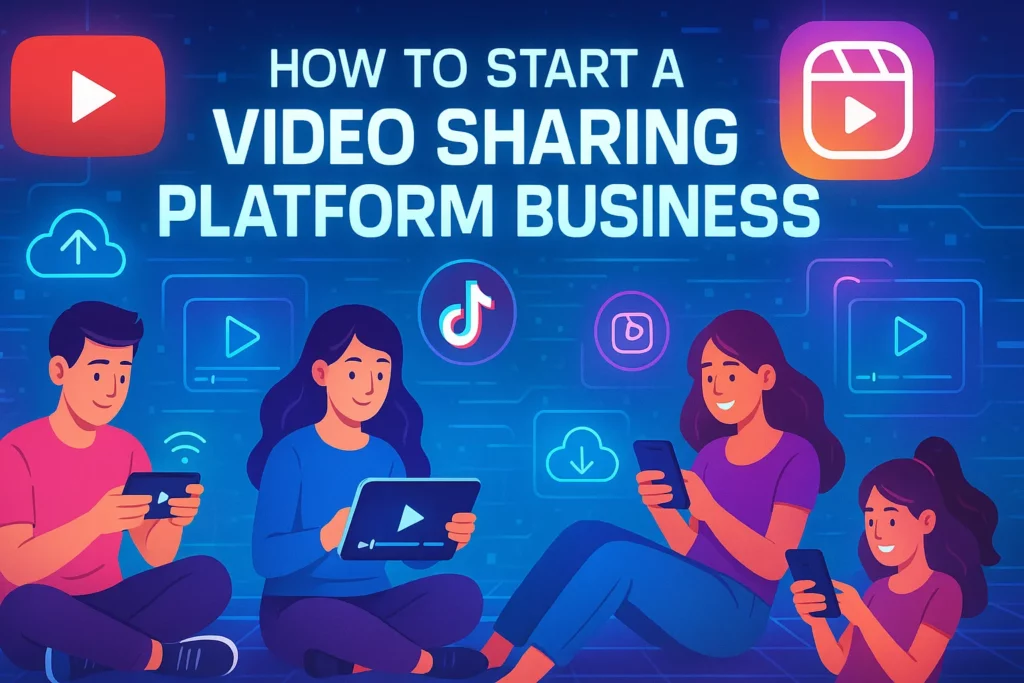Imagine this: It’s 2025, and you’re hunting for the right talent or trying to switch careers—but instead of browsing the same old crowded job sites, you land on a sleek, niche-focused job board that feels like it was made just for your industry. That’s the new wave of hiring and recruitment. In a world where remote work, gig jobs, and AI-powered recruiting are shaping the future, job board platforms aren’t just relevant—they’re essential. Whether you’re a founder, a solo recruiter, or a SaaS dreamer, now’s the perfect time to jump into the job board space.
I’ve personally seen startups struggling to gain traction until they launched their own job boards. One of my close friends built a micro-niche job portal for Web3 developers—and guess what? Within six months, it was bringing in monthly recurring revenue through recruiter subscriptions. No massive VC funding, no big team—just a smart product built on a solid idea. You don’t need to reinvent the wheel. You just need to roll it in the right direction.
In this blog, we’ll dive deep into how you can develop your very own job board platform app from scratch (or smarter yet, use pre-built solutions like Indeed Clone by Miracuves). We’ll explore tech stacks, must-have features, monetization tricks, and even juicy pitfalls to avoid. If you’ve been dreaming about launching your own Indeed-style job platform, this post is the sign you’ve been waiting for.
Stick with me till the end—we’re not just talking code and features here. We’ll get into strategy, real-world use cases, design tips, and how to actually make your job platform stand out in a crowded market. Ready? Let’s build something worth posting about.
Why Job Board Platforms Are Booming Right Now
The 9-to-5 job model has cracked wide open. Post-pandemic shifts, AI disruption, and the freelance boom have all contributed to an exploding demand for flexible work platforms. Traditional job giants like Indeed, LinkedIn, and Monster are still around—but they’re bloated, slow, and often too generic.
Enter niche job platforms. Whether it’s for tech talent, blue-collar gigs, local part-time roles, or remote-first companies—users crave targeted, fast, and relevant listings. And employers? They want quality over quantity.

–
How to Build a Job Board Platform App (Step-by-Step)
Step 1: Define Your Niche
Don’t try to compete with Indeed or LinkedIn head-on. Focus. Pick a niche—e.g., tech freelancers, healthcare jobs, local gigs, or university placements.
Step 2: Choose the Right Development Path
- From Scratch: Ideal if you have deep pockets and time.
- Use a Clone Script: Faster, cost-effective, and scalable. Our recommendation? Go with Indeed Clone—a ready-to-launch platform by Miracuves that saves you months of dev work.
Step 3: Core Features You Must Include
- Employer & Jobseeker Dashboards
- Resume Upload & Parsing
- Advanced Job Filters
- Job Alerts & Notifications
- Candidate Matching Algorithms
- Payment Gateway for Premium Listings
Why Choose Indeed Clone Over Starting from Scratch?
Building a job board platform isn’t just about listing jobs. It’s about smooth UI/UX, SEO-friendliness, secure payment processing, and powerful matching algorithms. Indeed Clone takes care of all that out of the box.
It comes loaded with:
- Modern mobile-first UI
- Admin panel to control everything
- Built-in payment modules
- Real-time notifications and chat
- GDPR-ready privacy controls
And the cherry on top? It’s customizable. Add your own branding, features, or integrations—without getting into dev hell.
How to Pick the Right Stack & Hosting
Choosing the right tech stack can make or break your job board’s performance. Here’s a simple breakdown:
| Layer | Tech Recommendation |
| Frontend | React / Vue.js |
| Backend | Node.js / Laravel |
| Database | PostgreSQL / MongoDB |
| Hosting | AWS / DigitalOcean |
| Extras | Redis, Elasticsearch |
Monetization Ideas
A job board platform can make you money in more ways than one:
- Paid Job Listings
- Resume Downloads for Employers
- Banner Ads
- Subscription Packages
- Featured Employer Spotlights
Bonus Tip: Offer a freemium model with powerful upsells. Hook them, then upsell them.
Common Pitfalls to Avoid
- Generic Design: Looks matter—invest in a clean UI.
- Poor Search Filters: Users bounce fast if they can’t find what they need.
- No Mobile Optimization: In 2025, most job searches start on phones.
- Lack of Engagement: Send alerts, tips, newsletters—keep users coming back.
Conclusion: Building the Future of Hiring
By now, you should have a solid roadmap for building your own job board platform. Whether you code it from scratch or go smart with Indeed Clone, the opportunity in 2025 is massive.
Job seekers want clarity. Employers want speed. You can give them both.
We’re not just talking tech—we’re talking about building bridges between opportunity and talent. And if you do it right? You’ll not only earn revenue—you’ll build impact.
FAQ :
Q1: Is building a job board profitable?
Absolutely! Niche job platforms with the right monetization strategy can bring in consistent monthly income—especially with minimal overhead.
Q2: What’s the fastest way to launch a job portal?
Using a pre-built solution like Indeed Clone is hands-down the fastest route. It’s plug-and-play, fully featured, and customizable.
Q3: Do I need coding skills to manage the platform?
Nope. With the admin dashboard on tools like Indeed Clone, you can run your platform without touching a single line of code.
Q4: Can I integrate payment gateways?
Yes, popular clones support Stripe, Razorpay, PayPal, etc. You can even set different pricing tiers for job posting.
Q5: How do I attract employers and job seekers?
Use SEO, LinkedIn outreach, and local networking. Offer free listings at launch, then upsell. Content marketing helps too!
Q6: What if I want to scale later?
Go for cloud hosting (like AWS) from day one. And choose scalable tech—React, Node, or Laravel backed by a solid DB. Have more questions or want a custom job board solution? Contact Miracuves to get expert help.






